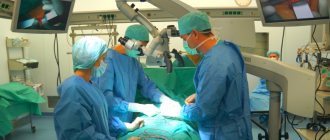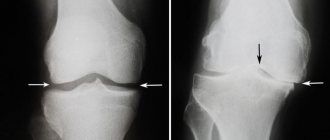The knee is one of the most vulnerable parts of the body and plays an important role in your daily life. With a healthy knee, you can walk, run, sit, stand, and climb stairs. Although your knees can support your weight, a slight blow or illness can damage your knees and cause serious problems. Sometimes knee pain and injury due to various reasons, such as osteoarthritis, cannot be treated. Knee replacement is the most effective way to relieve pain in these conditions. What is knee replacement? Knee replacement is a surgical procedure in which a damaged knee joint is replaced with an artificial joint.
It is a complex and slightly complex procedure that requires surgical skill and experience, as well as specialized post-operative care. This article will cover the knee replacement procedure, as well as pre- and post-operative procedures, side effects, and costs.
Types of Knee Replacement Surgeries and How They Are Performed
Surgeons perform two types of knee replacement surgeries depending on the severity of the knee injury: total knee replacement and partial knee replacement.
Total knee arthroplasty, or arthroplasty, is suitable for people whose knee joint is completely worn out and/or damaged due to osteoarthritis, rheumatoid arthritis, or other conditions. In this surgery, both sides of the worn ends of the knee joints are replaced with prosthetics. Total knee replacement is the most common procedure performed on people between 60 and 80 years of age. During surgery, the doctor trims the worn ends of the femur and tibia and replaces them with a curved piece of metal and a flat metal plate, respectively. A plastic spacer is then inserted between the metal parts to prevent friction; in fact, this plastic plate serves as cartilage. Finally, the doctor stitches the wound and you must stay in the hospital for 3-5 days.
Partial knee replacement is the simplest method and is suitable for patients whose knee joints have been damaged on one side. Since the knee joint on one side has been replaced with a prosthesis, the wound will be minor and less bone will be cut in this situation. Doctors prescribe this method to 1 in 4 people with osteoarthritis, and it has a shorter hospital stay and recovery time than the previous method. Another benefit of a partial knee replacement is that you can bend your knee more naturally than a total knee replacement.
Some of the most popular questions patients ask about knee replacement surgery are: What are knee replacement materials? Which method is best for me? In answer to the first question, the artificial knee joint consists of metal and high-quality, wear-resistant plastic. Cobalt-chromium and titanium alloys are used as metals. Which method is right for you depends on your doctor's diagnosis and the extent of joint damage. However, keep in mind that knee replacement surgery is an important procedure that should only be considered as a last choice for patients whose pain is not relieved by physical therapy and steroid injections .
Who Are the Best Candidates for Knee Replacement Surgery?
Endoprosthesis replacement is the last option for people with limited mobility and pain even at rest. Over time, you may wonder what is causing the damage to your knee joints. Osteoarthritis is the main cause of damage to the bones of the knee over time, and symptoms appear as you age. In addition to this, other diseases such as hemophilia , knee injury , gout and rheumatoid arthritis can damage the knee.
In this case, after some time, people will experience severe knee pain, which will affect their daily and daily activities and reduce their quality of life. You can try various treatments to relieve pain during this period, but when your knee joint is completely worn out, your only choice is knee replacement. There are some signs that you are ready for a knee replacement, some of which include:
- Swelling and stiffness in the knee joint
- Moderate to severe knee pain, even at rest
- Severe pain that disrupts your privacy and sleep
- Everyday tasks such as shopping and getting out of the bath become impossible
- Knee pain with knee deformity and deviation
- Pain does not improve even with anti-inflammatory drugs
- You are depressed due to pain and lack of mobility
- You are unable to work or have a social life
- Severe knee pain limits daily activities such as walking, climbing stairs, sitting and rising from a chair.
These options indicate that you need to have this surgery to get back to your normal life. The risks and recovery time may scare you, but don't worry; if you choose a professional surgeon, you will not have any post-operative problems. In addition, preoperative preparation is necessary to perform a simple operation with minimal side effects.
Is there an alternative
It is no coincidence that European orthopedists equate total prosthetics to internal amputation of the knee joint. This is the most radical measure of all existing ones. When performed, a large amount of bone tissue is removed, which is not restored. The integrity of the joint is compromised, and foreign elements appear in it throughout life. Nobody knows how the body will behave and what mechanisms it will launch to fight them.
Total arthroplasty is recommended for significant damage to the joint and cartilage, when classical treatment of osteoarthritis is not effective. Is it possible to influence the situation differently? It is possible if you solve several problems:
- restore the deficiency of synovial fluid, due to which all components of the joint suffer;
- mechanically push apart the cartilaginous surfaces and stop their painful friction;
- activate the synthesis of your own joint fluid;
- help the joint recover by nourishing it with chondroitin and glucosamine.
Even at an advanced stage of gonarthrosis, when mobility is seriously limited, it always makes sense to start treatment not with surgery, but with intra-articular injections of a liquid endoprosthesis. Noltrex is a synthetic endoprosthesis that replaces the missing synovial fluid. After injection, it is evenly distributed over surfaces and remains inside for a long time, performing shock-absorbing and lubricating functions.
"Noltrex" is a loyal treatment for arthrosis, without complications and difficult recovery
Before And After Knee Replacement Surgery
Before any operation, you must be mentally and physically prepared. Get more accurate and reliable information about endoprosthetics and familiarize yourself with the procedure. You can do this by reading informative articles on various websites or asking people who have had arthroplasty surgery to share their experiences with you. To have a short recovery period, strengthen the muscles around your knee by performing special strengthening exercises several weeks or months before the procedure. Doctors recommend light exercise, such as walking or swimming, before knee replacement surgery. To familiarize yourself with all the steps of the procedure, here are the steps to take before, during, and after surgery.
Before the Surgery
- Before the procedure, you will sign a consent form, read it carefully, and ask your doctor any questions you may have.
- Your doctor may order a number of tests, such as blood tests, to make sure you are in good health before you have surgery.
- Be sure to talk to your doctor about all medications, chemicals, and herbal supplements you are taking.
- Tell your doctor if you are allergic to any drugs, anesthesia, or metals; otherwise it may pose a serious risk to you.
- If you have a history of bleeding problems or are taking anticoagulants such as aspirin, tell your doctor.
- Avoid drinking alcohol and smoking for about two weeks before surgery; otherwise, the risk of dangerous bleeding will increase on the day of surgery.
- You must fast for eight hours before the procedure.
These are some general tips that are almost the same for all patients, but the doctor may prescribe other specific medications depending on the physical condition and health of the patient.
Operation Day
- Your anesthesiologist will put you to sleep using general anesthesia to make the operation easier for you.
- A urinary catheter may be inserted after you are placed on the surgical table.
- The surgeon will make small incisions at the knee surgery site.
- The worn end of the knee joint is then replaced with an artificial joint made of plastic and metal.
- Finally, sutures or surgical staples will be used to close the incision.
- You will then be taken to the recovery room to have your vital signs checked.
You will not notice or feel any of the above steps. But don't worry; The anesthesiologist and all members of the surgical team will regularly monitor your general condition and vital signs. You will be transferred to the surgical department and post-operative treatment will begin as soon as your general condition has stabilized and you have regained consciousness.
After operation
- You will be prescribed painkillers to reduce pain
- A drain may be inserted to drain fluid from the incision site.
- 12 or 24 hours after surgery you should be up and walking with the assistance of staff
- While you are in the hospital, your physical therapist will teach you specific exercises to strengthen your knee.
- The day after surgery, you can slowly begin to exercise
Typically, you should stay in the hospital for 3-5 days, but this may be reduced to 1-3 days, depending on your general condition. The bulk of your recovery period will take place at home and you will need to be very careful with your new knee.
Preparation for total knee replacement surgery
Preparation for surgery begins with a full medical examination, during which the patient needs to pass all the necessary tests.
All this takes one day in Israeli clinics. The next day after the examination, the patient is hospitalized for the operation itself.
Before starting it, the anesthesiologist will talk with the patient to decide which type of anesthesia to choose: general or epidural.
A significant number of such surgical interventions are performed under spinal anesthesia.
Its advantage is that it allows the patient to sleep peacefully throughout the procedure. After it stops, you wake up almost immediately and without pain.
Steps to Take Care of Your New Knee
There are many steps you can take to care for your new knee joint, but strengthening exercises are an important part of your recovery plan. Perform these exercises regularly under the supervision of a physical therapist so that you can quickly resume your daily routine. The following steps will also help you take care of your knee replacement:
- To reduce swelling, elevate your leg while seated and apply an ice pack to the operated area every three to four hours for 20 minutes.
- For the first six weeks after surgery, do not sit cross-legged.
- Avoid physical activities that strain your knee.
- Do gentle exercises and light walking to reduce knee stiffness.
- Never place a pillow under your knee while sitting or sleeping.
- Do not drive for 6-8 weeks after surgery and be sure to consult with your doctor before you can resume driving.
- For the first three months, do not do heavy work at all, such as vacuuming or moving furniture. You can only do simple things like dusting and doing laundry.
- Do not have sex for 6-8 weeks after surgery.
Indications
Endoprosthesis replacement is recommended for patients who, due to injuries or various diseases, have completely or partially lost the ability to bend the leg at the knee joint. Decreased range of motion is often a symptom of:
- degenerative processes in the joint;
- aseptic necrosis;
- systemic connective tissue diseases;
- congenital developmental anomalies;
- intra-articular fractures.
What Can You Expect After Knee Replacement Surgery?
Before you have a knee replacement, you should consider how much it will affect your return to normal life. Most people expect this surgery to completely solve their problem, but this is an unrealistic expectation. Endoprosthesis replacement significantly reduces pain, improves mobility and improves quality of life. About 8 weeks after surgery, you can engage in activities such as walking, swimming, cycling, driving, and climbing stairs. However, keep in mind that an artificial joint will never act like a healthy knee for you and you must take great care of it. Activities such as running, jumping, hiking, skiing, tennis, and lifting heavy objects can pose a serious threat to the survival of a knee replacement. However, this surgery will significantly reduce the pain caused by a knee abrasion, and for people who experience pain even at rest, this may be the only thing they look forward to from the surgery. However, to have a comfortable life after surgery, you will need to take care of your artificial knee for many years.
Contraindications
Knee replacement is not performed in the presence of absolute and relative contraindications.
Absolute contraindications:
- decompensated pathology of internal organs;
- acute infectious diseases;
- mental health disorders;
- infectious arthritis;
- vascular pathology of the lower extremities in the acute stage;
- allergic reactions to anesthesia components, artificial joint materials.
Relative contraindications:
- oncological pathology;
- chronic diseases of internal organs;
- disruption of bone mineralization due to changes in hormonal levels;
- excess body weight.
How Long Does a Knee Replacement Last?
The complete recovery process after surgery takes about two years; During this time, you can speed up the recovery of the muscles around the knee with strengthening exercises. A common misconception among people who have a knee replacement is that they think the prosthesis will last forever. However, this is not true; wear and tear from daily use eventually causes damage to the plastic part of the artificial joint. According to the National Joint Registry (NJR), one in 20 people who have surgery will need repeat surgery after 12 years, depending on the type of knee replacement surgery. This shows that these dentures are not permanent and the period may be shorter if you do not take proper care of them.
How does the operation take place?
The surgical intervention lasts from 1 to 1.5 hours. The duration depends on the type of pathology and the nature of the disease.
The latest techniques in the clinic of Dr. Igor Kazansky allow the doctor, during surgery, not to cut off muscles and tissues, but to move them apart for convenient access to the joint.
Dissection leads to severe postoperative consequences and long and painful healing. The severed tissue cannot be completely restored.
There are no such consequences when moving the muscles away. Surgical trauma is significantly reduced, and the ligamentous-muscular system is restored in a short time. The healing process itself is not painful for the patient.
And the most important thing is that the joint subject to surgery functions fully after recovery.
In addition, the clinic of Dr. I. Kazansky uses a special method that reduces blood loss - up to 100 ml.
Side Effects of Knee Replacement Surgery
All surgeries have side effects, which can be mild or severe, depending on the patient's condition. In addition to the patient's condition, it may depend on the skill and experience of the surgeon. Statistics show that patients who choose professional and experienced knee replacement surgeons experience few post-operative complications. Endoprosthetics can also cause moderate to severe side effects, which doctors report occur in 1 in 20 cases. Fortunately, most of these side effects are minor and go away after some time. Here are some common side effects of knee replacement surgery:
- Side effects associated with anesthesia include sore throat, aches and pains, drowsiness, vomiting, shaking and difficulty breathing. Anesthesia-related side effects are rare but common in people who are allergic to anesthetic drugs.
- Deep vein thrombosis (DVT) refers to the formation of a blood clot in a vein deep inside the body, which is one of the most dangerous and common side effects of orthopedic surgery. This blood clot can travel to the heart and lungs through the bloodstream and can be life-threatening if left untreated.
- Unexpected bleeding inside a joint usually occurs due to the use of anticoagulants given to patients after surgery.
- Infection is one of the most serious and rare side effects of knee replacement surgery. According to statistics, about 1.5% of patients experience joint and wound infections within three months after surgery.
And other complications such as:
- Wound complication
- Continued pain or stiffness
- Loosening and fracture of the implant
- Allergy to Artificial Joint Metals
- Loss of Movement
- Complications of the popliteal artery
- Nerve damage
- Death
Endoprostheses
In each case of a patient’s request, the surgeon selects a prosthesis based on test results and diagnostic observation.
At Dr. Kazansky’s clinic, new generation endoprostheses are used during surgical procedures.
They have a long service life: 25–30 years. Unlike endoprostheses of previous generations, they completely replicate the anatomical structure of the joint.
This greatly simplifies the implantation process, and the prosthesis itself takes root faster. Previously, surgeons had prostheses that could only be used for 10–15 years.
The endoprosthesis is selected by the attending physician. Dr. Igor Kazansky knows exactly all the structural features of the human body and the process of implanting endoprostheses from different manufacturers.
That is why it is so important to trust an experienced specialist who has extensive experience in carrying out such procedures.
Prostheses for total joint replacement surgery are made from modern high-quality materials.
Those parts that perform the function of constant sliding are made of titanium alloys.
Their surfaces are made from very durable polyethylene and aluminum oxide ceramics. Such parts are able to withstand constant loads without being damaged.
Different friction units are suitable for different patients. For some, a ceramic-ceramic friction pair is more suitable, while for others, a ceramic-metal friction pair is more suitable. All this is also taken into account by the orthopedic surgeon.
Alternatives to Knee Replacement Surgery
Fear of surgery, especially knee replacement, is one of the main reasons why patients always seek alternative treatments. They are usually concerned about side effects, recovery, and most importantly, they don't want to lose their knees. Nowadays, doctors usually offer other alternative treatments to patients. These methods include:
Mini-Incision Method
Mini-incision surgery is one of the most popular methods that surgeons often use for partial knee replacement. In this method, the surgical team makes a smaller incision than the standard incision method and uses a special tool to maneuver around the tissue. Shorter recovery time and no additional incision are advantages of mini-incision surgery.
Patellofemoral replacement
Another name for patellofemoral surgery is kneecap replacement surgery, which is the best option for those who have a damaged kneecap. Thus, thanks to this simple operation, there is no longer any need to perform a total or partial knee replacement surgery when the kneecap is damaged.
Image-Based Surgery
This is a modern method of endoprosthetics that does not have incisions and postoperative complications. The surgeon uses computerized images obtained by attaching infrared pointers to parts of your leg and surgical instruments to perform image-guided surgery.
Patient-Specific Endoprosthetics
As the name suggests, this arthroplasty method is a patient-specific procedure. In this method, each prosthesis is custom-made for each patient to ultimately fit them. Patient-specific knee replacement is an advanced type of knee replacement, and doctors believe it can last longer than a standard knee replacement.
When to resort to knee replacement
A healthy joint is a balance between muscle tension and ligaments of the joint capsule. Smooth, even cartilage allows bones to slide smoothly relative to each other. In the case of any pathological change in the joint, expressed by pain, and also not accepting conservative treatment methods, surgical intervention cannot be avoided.
Endoprosthetics may be required if:
- arthrosis of the knee joint (gonarthrosis, post-traumatic arthrosis);
- rheumatoid polyarthritis;
- improper healing of intra-articular fractures of the articular surface of the bone that makes up the knee joint;
- damage to the ligamentous apparatus of the knee with a pronounced change in the articular surface of the bone;
- antiseptic and avascular necrosis;
- tumor formations;
- Bekhterev's disease;
- intra-articular or periarticular infection;
- degenerative-dystrophic diseases.
A face-to-face consultation with an orthopedic surgeon involves assessing the degree of wear and tear of the joint, and the necessary studies and functional tests allow you to decide whether knee surgery is necessary. In addition, the specialist must determine all the indications and contraindications for the surgical procedure, discuss with the patient any nuances that may affect subsequent treatment, and also select the type of endoprosthesis taking into account the condition of the bone tissue and the anatomical features of the knee.
How Much Does a Knee Replacement Cost?
Artificial knee joints tend to be expensive because they are made from special high-quality metal and plastic. Knee replacement surgery is typically a complex and complex procedure that requires great precision. Reports state that the average cost of total knee replacement in the United States is $50,000, and the average cost of partial knee replacement is 10-20% less than total knee replacement.
And the Last Word...
If medication, changes in daily activities, and physical therapy do not help relieve the patient's problems, knee replacement is the last choice. Before surgery, try to learn more about the procedure, side effects, and recovery period. You can do this by consulting your doctor and asking him to show you knee replacement before and after photos or by reading scientific articles on reputable websites. If you are one of those who have done this, please write down your experience for other users.
Recovery
Rehabilitation measures for patients after knee replacement must be carried out under the supervision of a specialist, since excessive physical activity can lead to damage to the artificial structure.
In the first days after surgery, crutches or high walkers are used, later - a cane. It is important to try not to limp right away, because changing your gait may be difficult in the future. After knee replacement surgery, you will be able to walk without additional devices in 4-6 weeks, and after 2-3 months, the doctor may allow you to engage in relaxing sports.
For the rehabilitation of patients, therapeutic exercises, massage, and physiotherapeutic procedures are used. A set of exercises is developed individually.
After endoprosthetics, observation by a traumatologist is recommended - the required frequency of examinations is determined individually
You can make an appointment for a consultation about knee replacement by phone, through a mobile application or the patient’s personal account on the website
Walking during recovery after total knee replacement
Patients at the clinic of Dr. Igor Kazansky are allowed to walk with the help of special walkers the very next day after surgery.
This measure is needed not only for self-care, but also as an exercise to restore the joint.
Walking activates the muscles, tones them, restores proper blood circulation, and, therefore, speeds up recovery.
There are also special exercises for walking with a walker. One of them: stand up straight, distribute your body weight on the walker.
Move the walker forward a short distance, and then move behind it, raising your leg so that you feel the floor when it touches.
Keep your knee and ankle flexed as you move behind the walker. Give your leg a rest and lower it to the floor.
Perform the next step, be sure to lift your foot off the floor.
Repeat the task.
This exercise can be done until the operated leg gets tired.
Don't rush and do the task carefully. Gradually increase the load on the affected leg.
It is recommended to walk not only along the corridor, but also up and down the stairs.
This task requires a certain amount of tension and effort from the operated leg.
Therefore, it is imperative to hold on to the handrails, always start climbing with your healthy leg, and descending with your sore leg.
It is worth remembering that the steps should not be very high.
Let's sum it up
90% of the load falls on our legs, so any factor can cause a “breakage” of the joint. The modern rhythm of life does not allow stopping: a blow, a jump, or even just stopping while walking quickly is a reason for early wear of the knee joint. Injuries and bruises in the knee area lead to impaired blood flow, which subsequently leads to the death of tissues deprived of nutrition.
Do not waste time on injections, ointments and other measures that do not produce results. It is better to accept the inevitability of surgery and choose a good doctor.
At an early stage, the pathology can be stabilized with medication and exercises. Unfortunately, most diseases are asymptomatic in the early period; We go to the doctor when therapy is ineffective. There are several options, but endoprosthetics has the greatest effectiveness - 95-100% of complete restoration of natural kinematics.
Gonarthrosis of the right knee joint (right) and a healthy joint (left). In this condition, only removal of the joint will help.
Successful joint replacement is half the result; final rehabilitation depends on your patience, effort and positive attitude.










